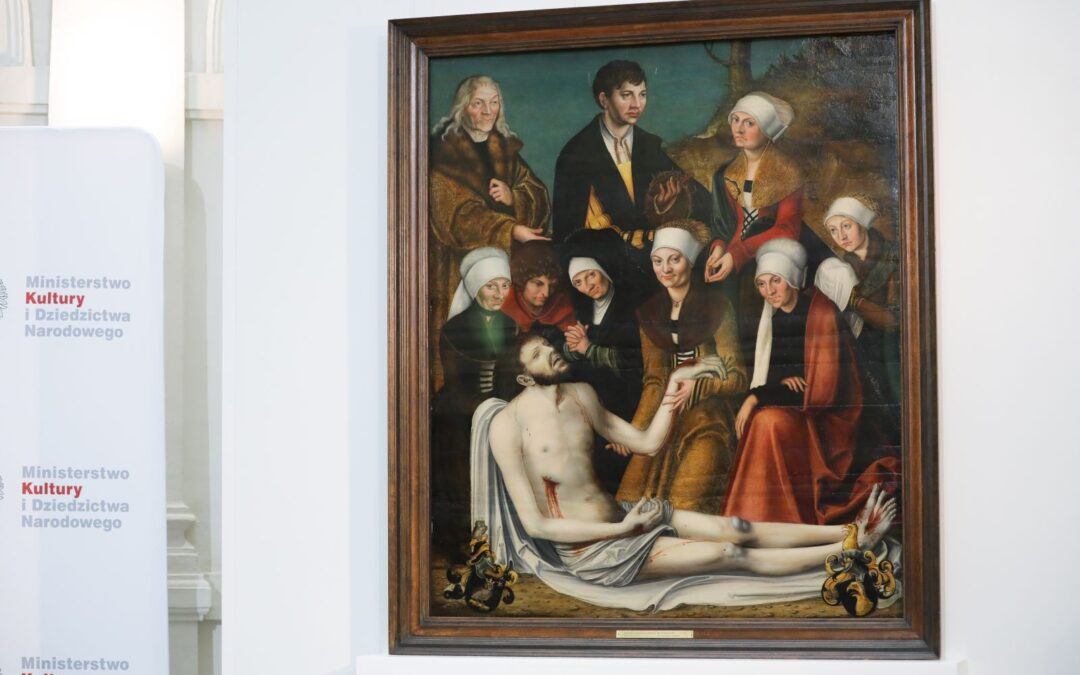A 16th-century painting – Lamentation of Christ by Lucas Cranach the Elder – which was put in storage during the Second World War and stolen shortly after, has been returned from Sweden to Poland.
The artwork, which was handed over to the National Museum in Wrocław yesterday, is “one of the most valuable objects lost as a result of the Second World War” and is of “exceptional class,” said Polish culture minister Piotr Gliński at the ceremony. He thanked Sweden for its “exemplary cooperation”
#wicepremier @PiotrGlinski w @NM_Wroclaw: Dzisiejsza uroczystość ma charakter szczególny. Do Polski powróciło dzieło sztuki zaliczane do najcenniejszych obiektów utraconych w wyniku II wojny światowej. pic.twitter.com/9h285CYaXk
— Ministerstwo Kultury i Dziedzictwa Narodowego (@kultura_gov_pl) January 31, 2022
The painting was created in the late 1530s by Cranach the Elder, a German Renaissance painter strongly associated with the Reformation, and funded by the family of the merchant Konrad von Günterode and Anna née von Alnpeck, as evidenced by the coats of arms in the lower part of the work.
In 1880, the painting was listed as part of the collection of the Silesian Museum of Fine Arts in Breslau, the German name of the city that after the war became part of Poland and is now known by its Polish name of Wrocław.
During the Second World War, it was taken to a repository of works of art in the town of Kamenz (which after the war became Kamieniec Ząbkowicki in Poland). However, in February 1946 it was stolen along with more than 100 other works during a break-in. In 1970, the painting resurfaced at an auction in the Swedish locality of Mariefred.
It was purchased by the Nationalmuseum in Stockholm from the heirs of the late Sigfrid Häggberg, a Swedish engineer who had lived in Warsaw from the early 1920s and cooperated with the Polish underground resistance during the war. It is not known how he came into possession of the painting.
The work was then identified by Piotr Oszczanowski, an art historian and head of the National Museum in Wrocław. Robert Hesi, who heads the museum’s documentation department, then helped collect archival materials for the restitution process, which was supported by the culture ministry.
Next, the Nationalmuseum conducted its own research and in June 2020 recommended to the Swedish government to return the work to Poland.
Speaking at the unveiling of the returned piece, Gliński thanked the Nationalmuseum in Stockholm for its “openness” to the restitution process and for its “exemplary cooperation” throughout.
“Sweden voluntarily, unconditionally and at no cost returned to Poland its loss of war,” said Gliński, calling it “another successful cooperation between the governments”.
Oszczanowski said that the Wrocław museum was “restoring one of its most valuable works”, which would be “the pride of our collections”. The painting will be permanently displayed in the European art gallery of the museum.
Main image credit: culture ministry press materials

Maria Wilczek is deputy editor of Notes from Poland. She is a regular writer for The Times, The Economist and Al Jazeera English, and has also featured in Foreign Policy, Politico Europe, The Spectator and Gazeta Wyborcza.



















